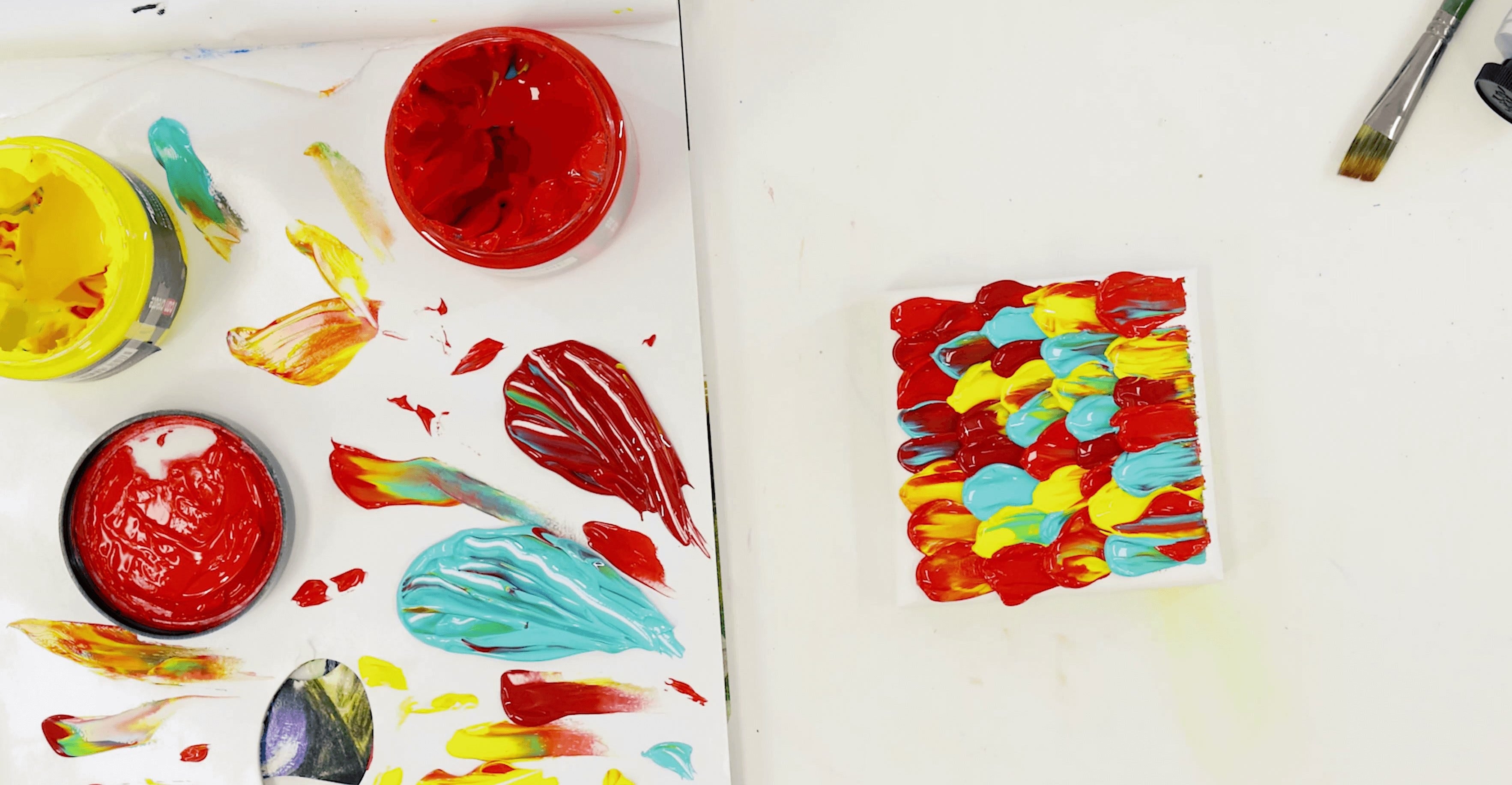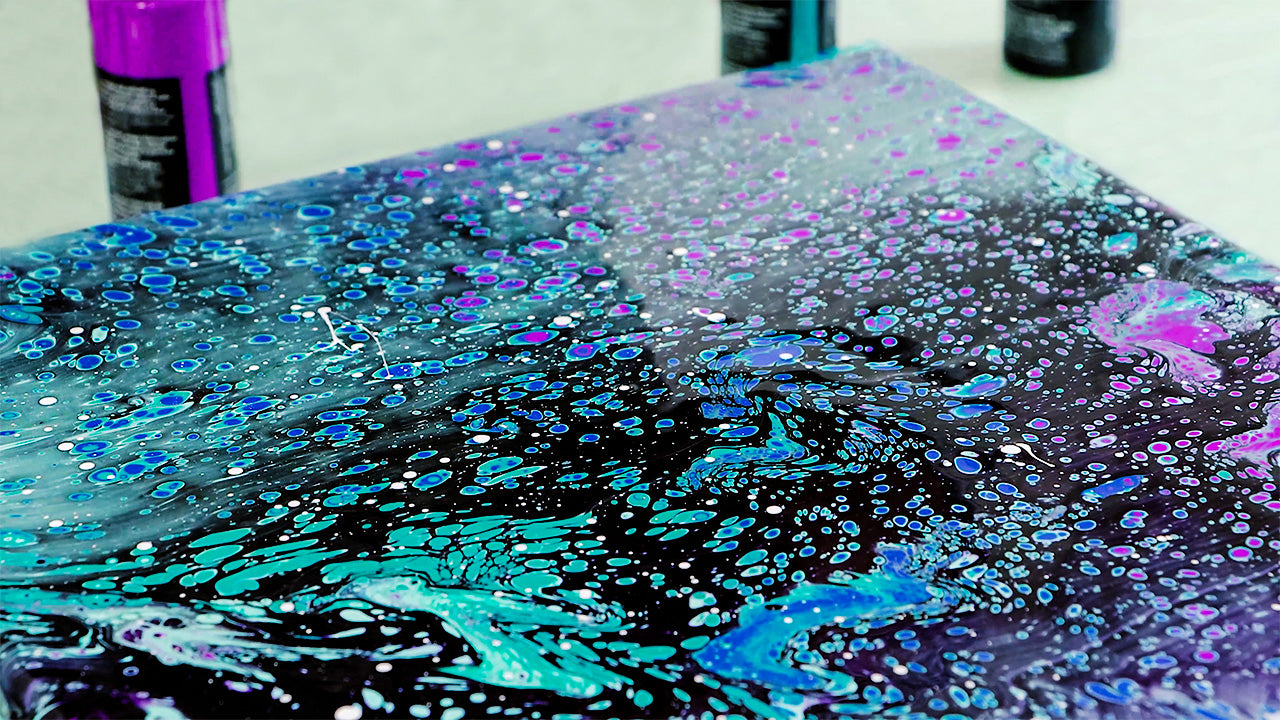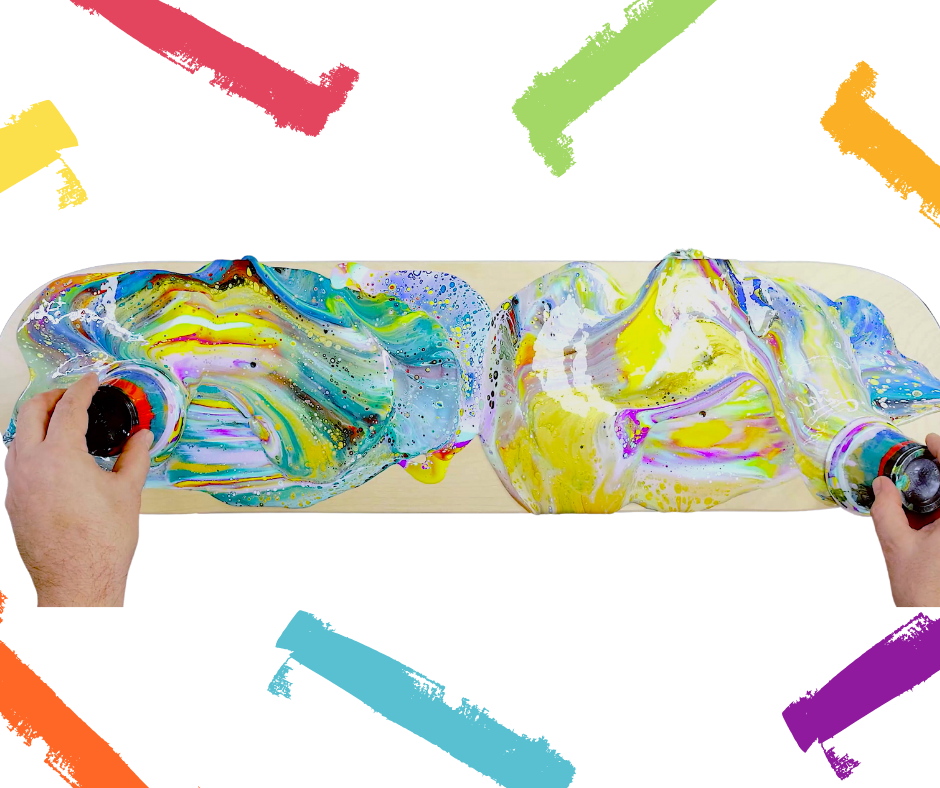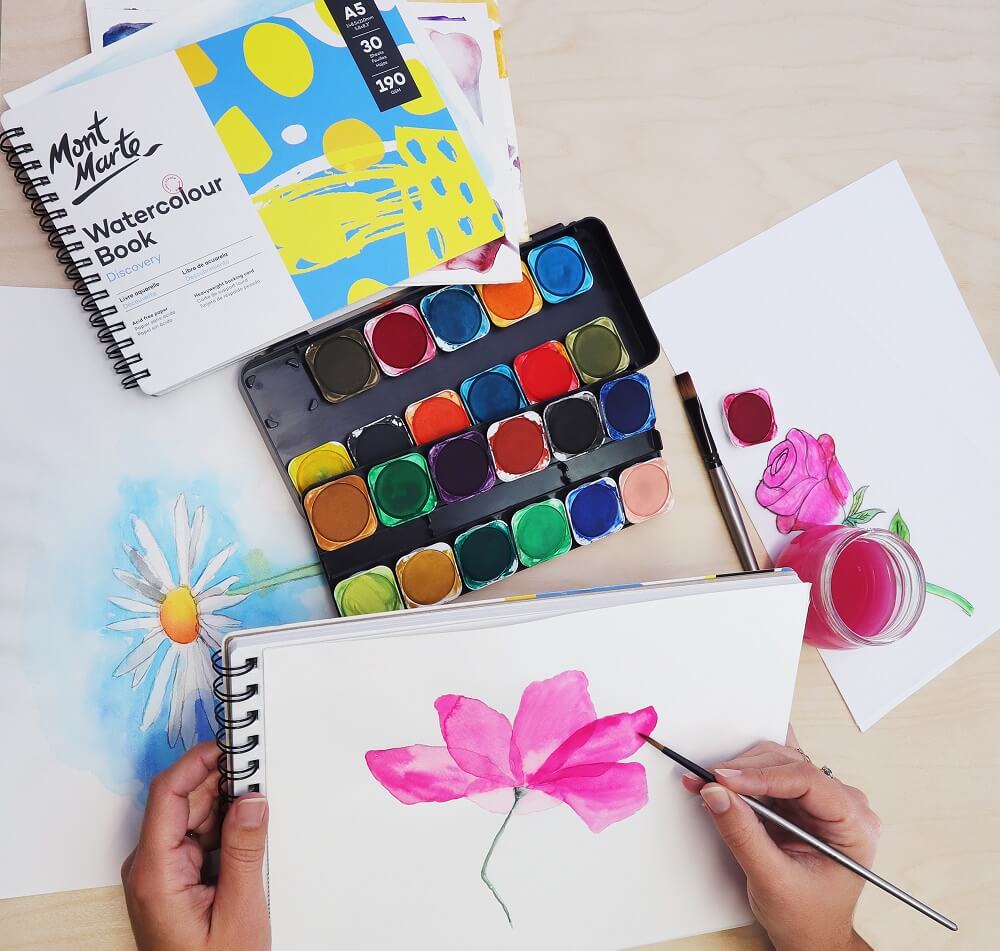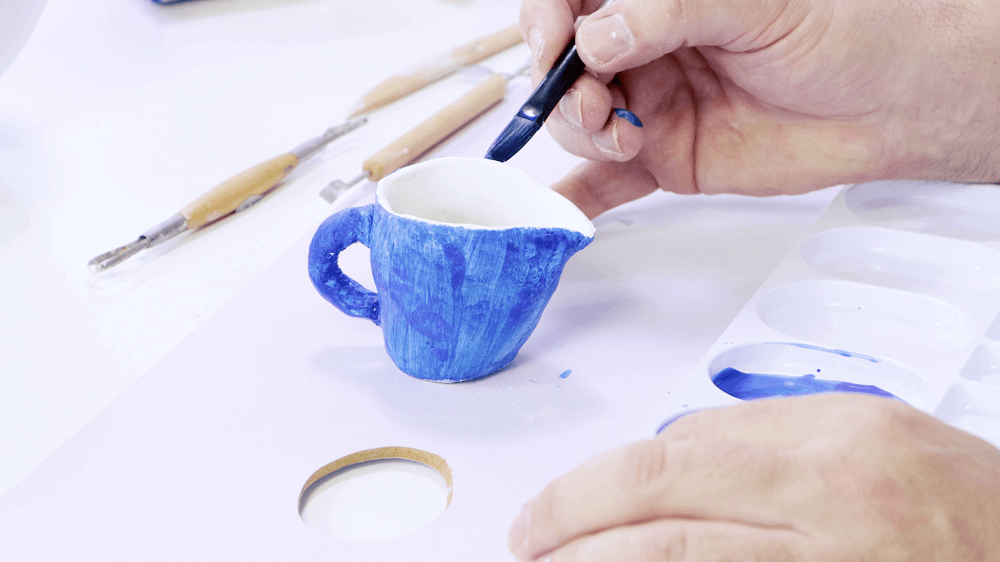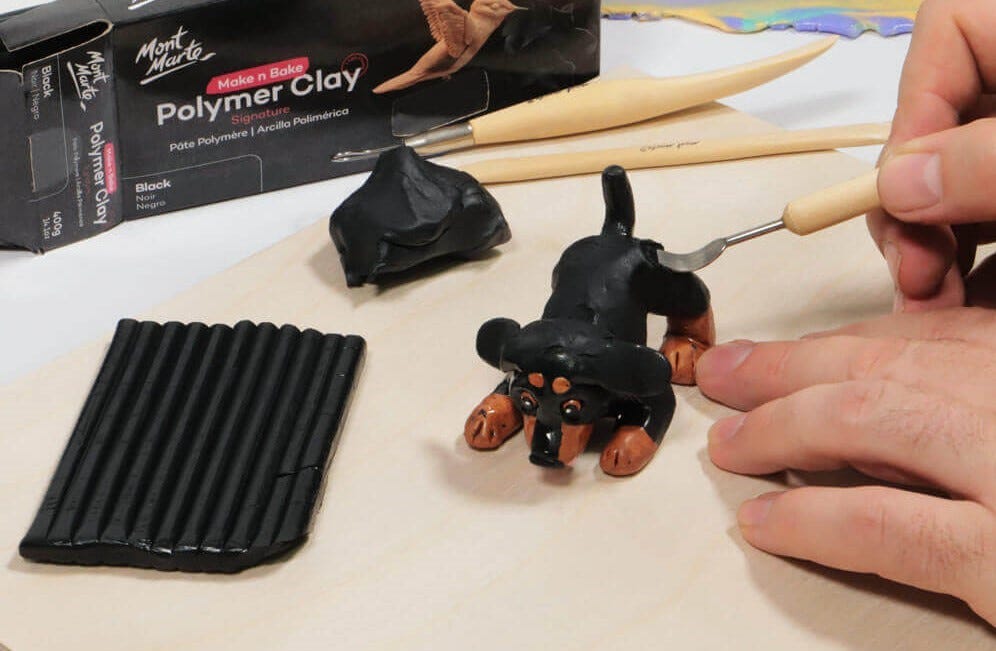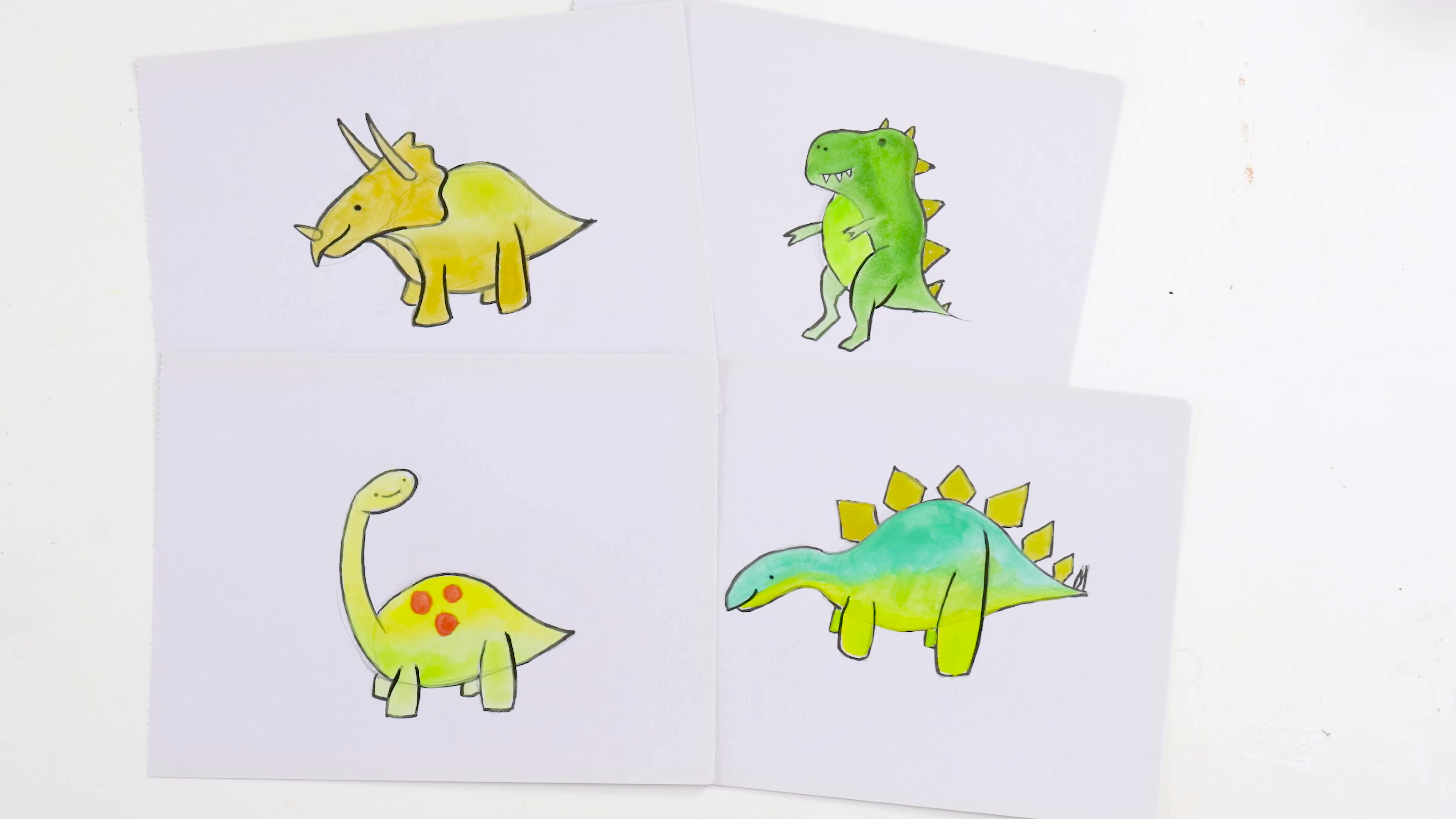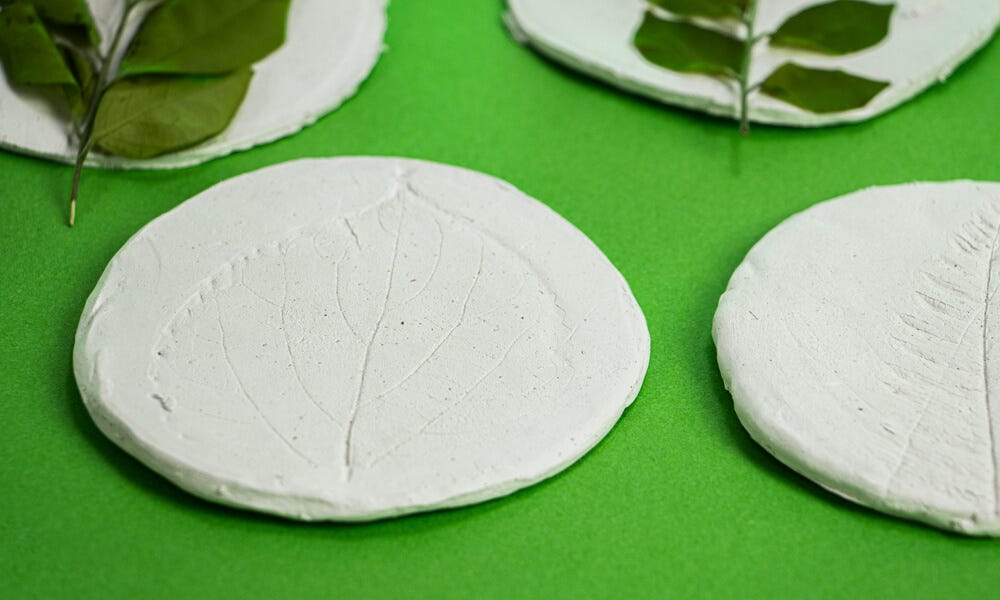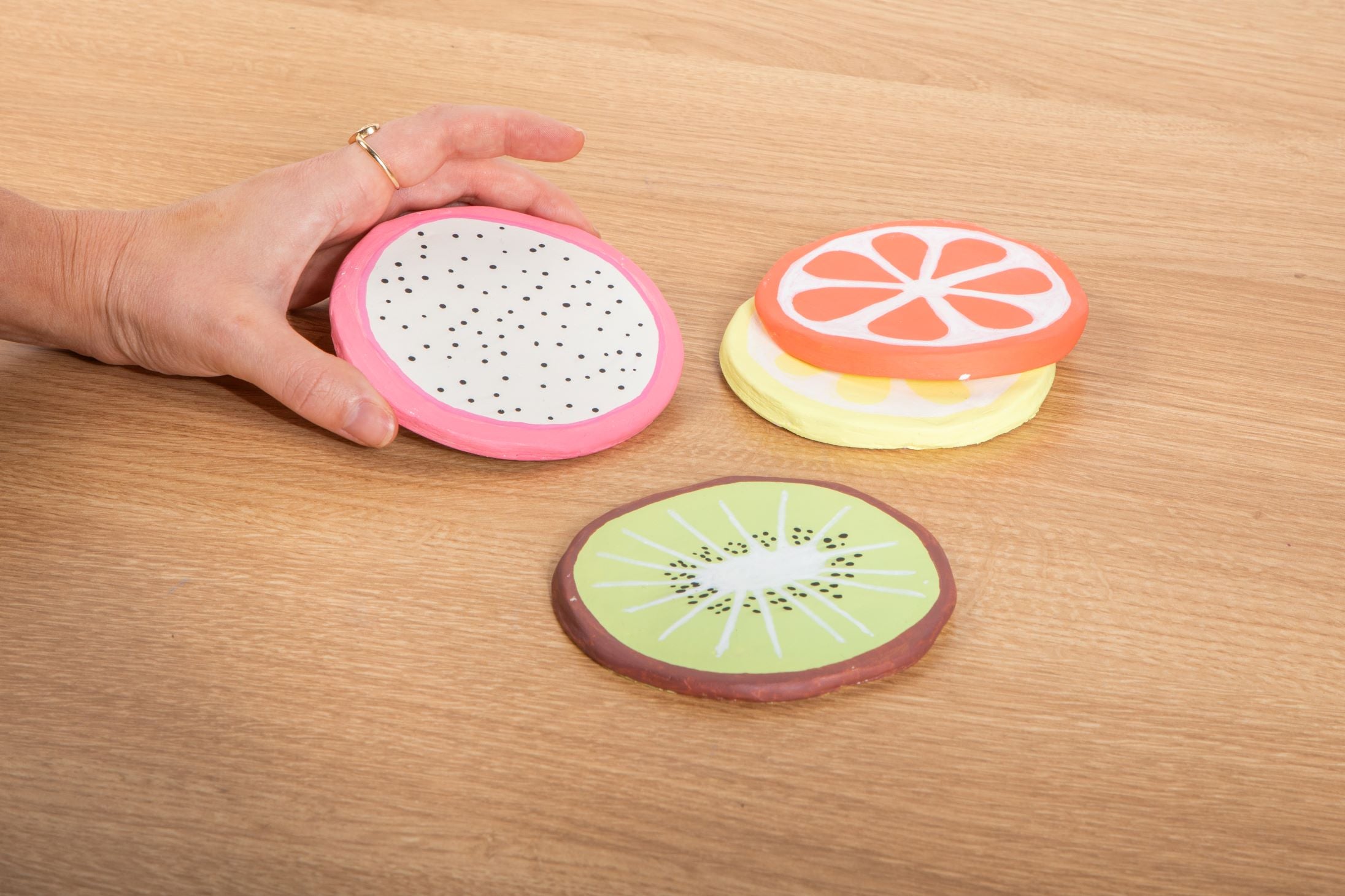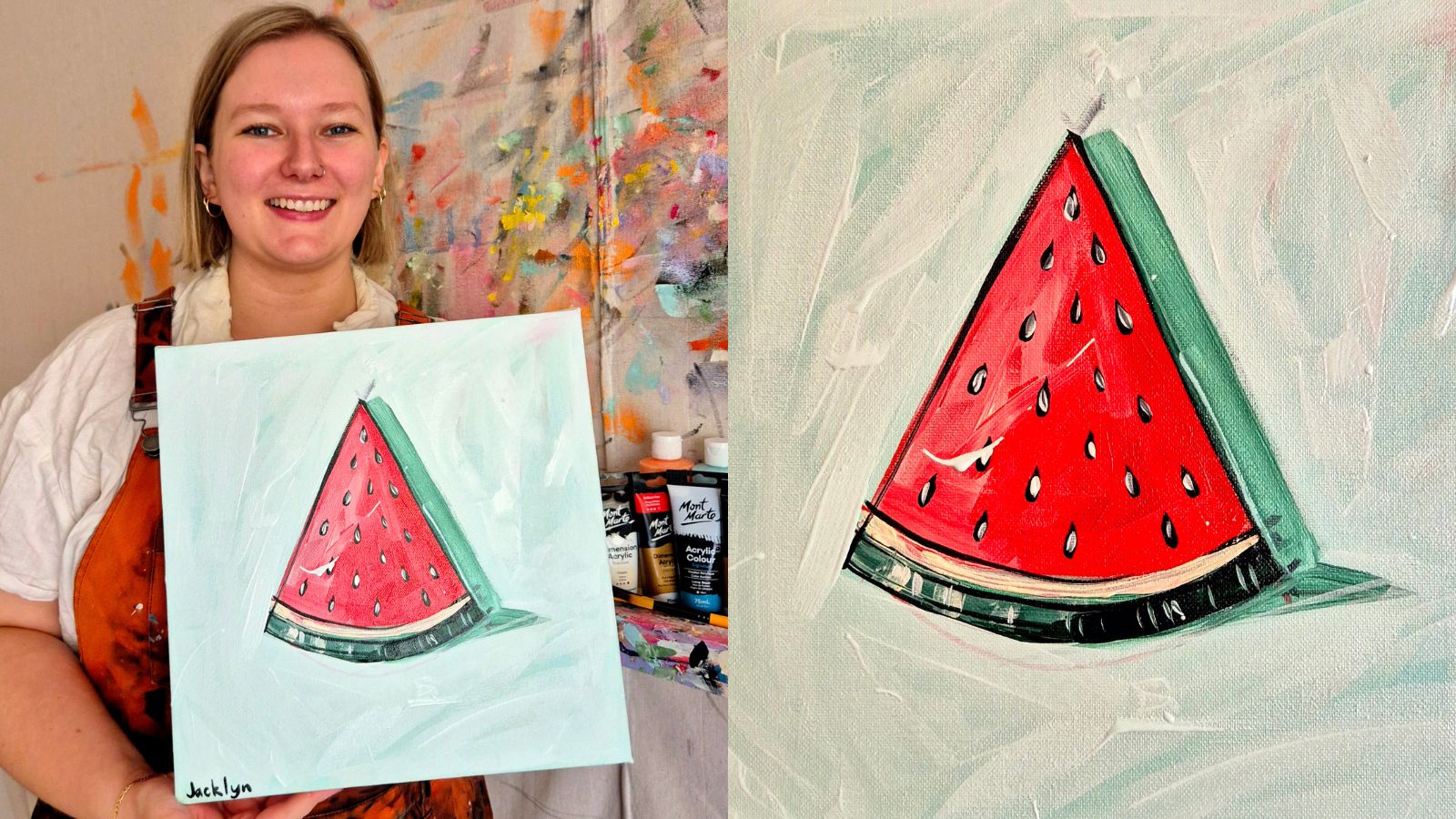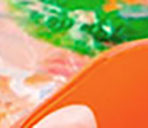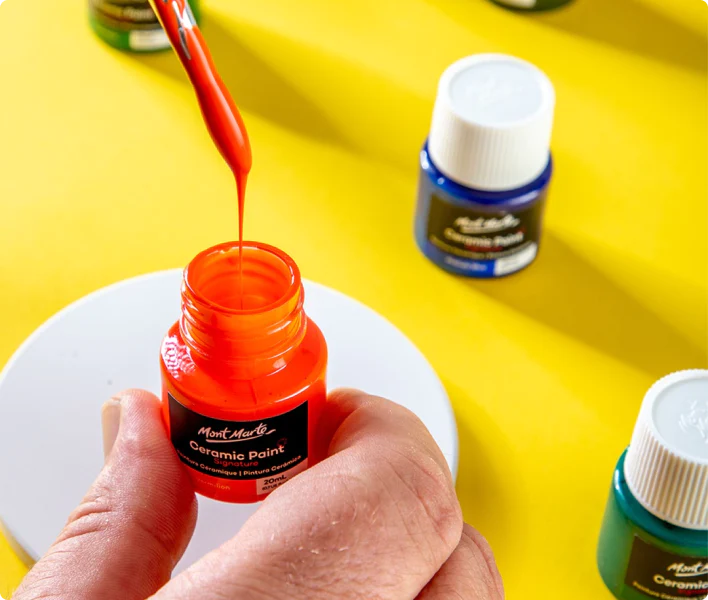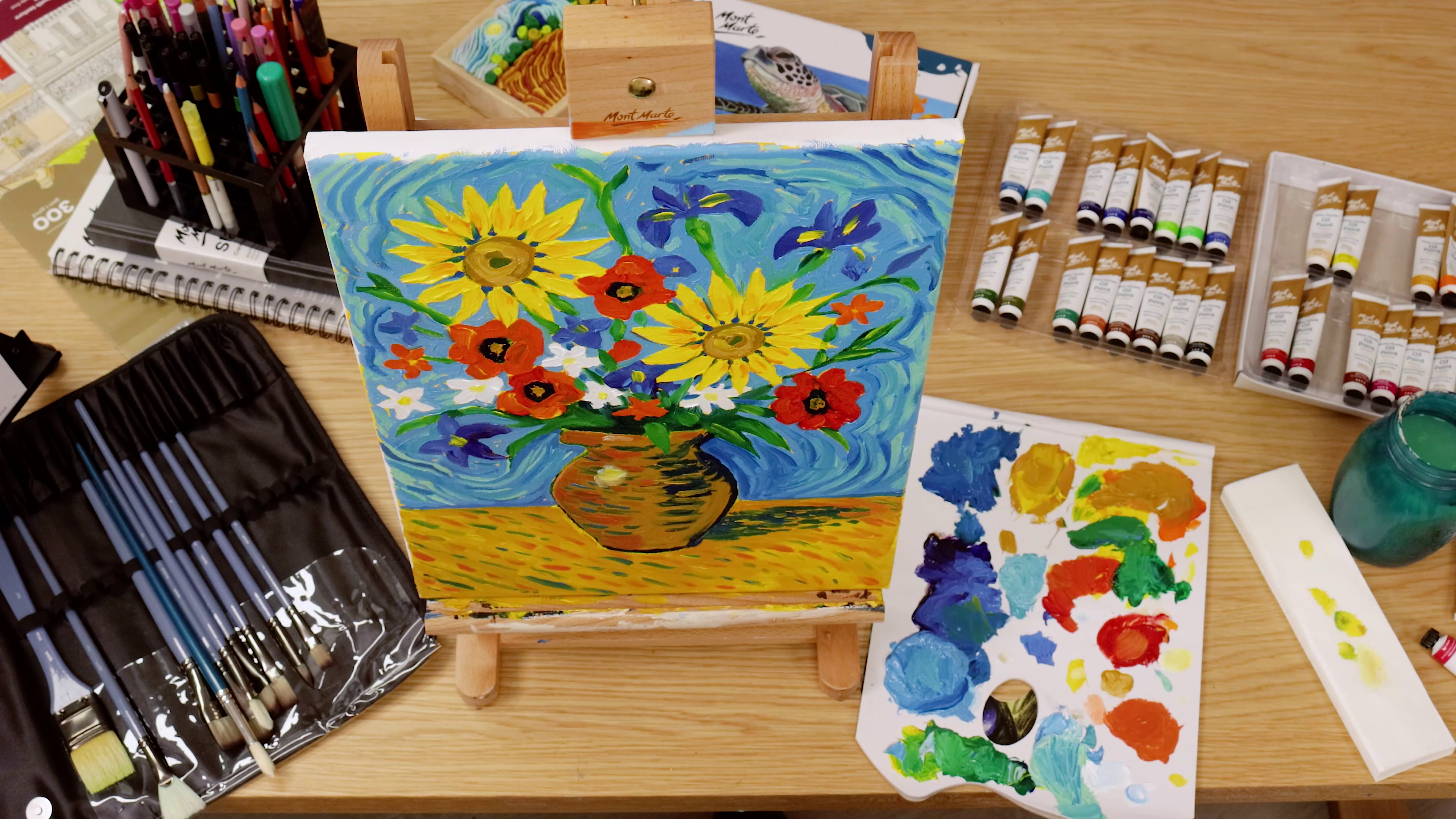If your feed’s been serving up dreamy swirls of Starry Night, golden sunflowers, or thickly painted skies, you’re not the only one. Vincent van Gogh’s bold, expressive style has been making the rounds again – from gallery walls to TikTok tutorials and aesthetic Pinterest boards. And with good reason 🌻🌠
His work really captures the eye with gentle but powerful expression. Plus, his style is approachable for those who love a bit of texture, movement, and mood in their art. So, if you’re ready to give it a go yourself, we’ve pulled together a few satisfying techniques to help you channel your inner Van Gogh – no beret required 😉
1. Impasto technique
One of Van Gogh’s signature moves was loading his brush with paint and using short, visible strokes to build energy and movement into his artwork. This impasto technique makes your work feel textured and alive – think how the sky seems to swirl in Starry Night!
Try this:
- Use a flat or round taklon brush and scoop up a generous glob of paint
- Apply it in dashes or curved strokes, depending on the vibe
- Let each colour stand on its own – don’t overblend
- Go heavy-handed in areas you want to draw attention to
Best for: Building those swirly skies and textured fields you see in Starry Night or Wheatfield with Crows. Bonus – you can use a palette knife if you want bigger, bolder texture!
2. Layering paint… but make it vibrant!
Van Gogh didn’t shy away from bold colours and neither should you. He often layered vibrant, unexpected combinations to intensify emotion and create contrast.
Try this:
- Block in your main colours first using Acrylic Colour Paints
- Layer complementary colours over the top – think blue + orange, yellow + purple, etc.
- Use dabbing motions or short strokes to build that layered look
- Don’t be scared of contrast – it creates interest and movement when layered!
Best for: Still life, sunflowers, night skies – or anything where you want the colours to pop.
3. Expressive painting
While Van Gogh wasn’t a cartoonist, many of his paintings featured outlines – not harsh black lines, but thoughtful contours that emphasised shape and structure.
Try this:
- Once your base colours are dry, use a round brush and darker colour (navy, forest green, even burnt sienna)
- Trace around the key shapes with a loose hand – think hillsides, horizons, buildings
- It’s less about being neat and more about framing the subject so it draws the eye
Best for: The Bedroom, Café Terrace at Night, or your own room-scape painting.
4. Brush stroke technique
Every brush stroke in Van Gogh’s work tells you something – which way the wind is blowing, how the sky is swirling, or what the mood is. Directional movement is all about building that rhythm through brush strokes.
Try this:
- Paint in curved or angled strokes that follow the shape of your subject
- Create “ripples” in the background using long swirling brushwork
- Use colour changes or white highlights to make your direction stand out
- Acrylics dry fast, so work in small areas at a time!
Best for: Starry skies, tree trunks, rolling landscapes, or flowing hair.
5. Painting mood
Van Gogh used colour and light to say something, whether it be about a place, a moment, or even his headspace. You can do the same by playing with light and contrast.
Try this:
- Choose a base palette that reflects a mood – warm tones for cosy, cool tones for mystery
- Use white or yellow to build highlights and soft glows (Van Gogh loved a yellow halo)
- Darken your shadows with purples or blues instead of black for a softer feel
- Think about what your lighting says about the time of day
Best for: Skylines, interiors, or turning your favourite landscape into a moody masterpiece.
6. Post-Impressionism… think emotion, not realism
Van Gogh’s genius wasn’t in perfect proportions – it was in how he felt the world around him. That’s what people connect with, and it’s something you can bring into your own work.
Try this:
- Choose a subject that means something to you – a park bench, a bouquet, your dog
- Don’t stress about getting it realistic – focus on how the subject makes you feel
- Experiment with contrasting colour and visible brushwork to exaggerate that emotion
- Let your style come through and embrace the chaos!
Best for: Anything, really – this is the heart of Van Gogh’s legacy.
Your Van Gogh starter kit
If you’re keen to recreate some of these effects at home, here are a few Mont Marte supplies to stock up on:
- Acrylic Colour Paints or Dimension Acrylics (for vibrant, buildable colour)
- Palette Knife Set (for bold impasto strokes)
- Traditional Oil Paints (if you want a slower drying time like Van Gogh used)
- Taklon Brushes – especially flats and rounds
- Canvas
Pair a few of these techniques together and you’ll be well on your way to making something that calls back to the Post-Impressionist era. Just remember – we’re not chasing perfection… more so chasing vibes.
Ready to give it a go? Grab your brushes and have a crack at your own starry sky or sunflower-inspired piece. Don’t forget to tag @montmarteart or use #montmarteart on socials if you post it – we’d love to see your take on this timeless aesthetic.


